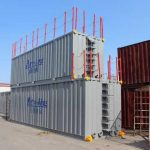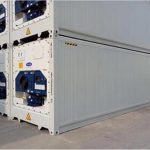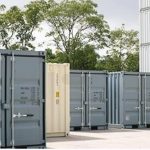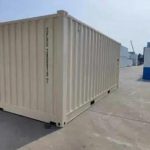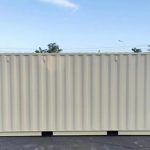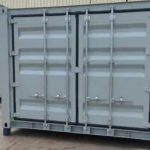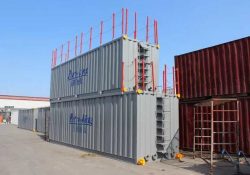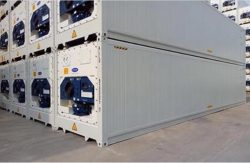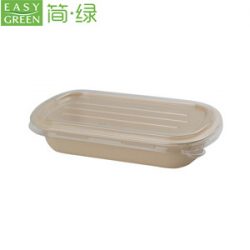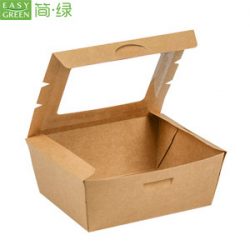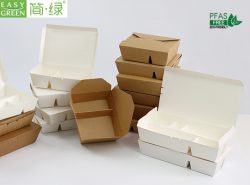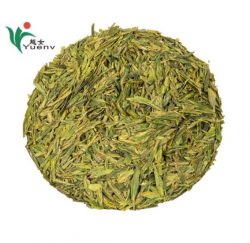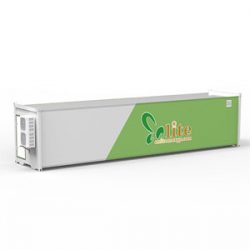Specialised Container for Sale/Rent
Specialised Container provides a diverse range of products tailored to meet the specific needs of various industries. Our offerings include 20-foot dry cargo containers with durable steel flooring, custom-fit 20-foot containers with specialized fittings, Container Energy Storage Systems (CESS), 20-foot high bulk containers, and tank containers designed for aquaculture. With our high-quality, purpose-built designs, we offer reliable and efficient solutions for transporting, storing, and managing cargo, energy, and water in a wide range of applications.
Types of Specialised Container for Sale/Rent
20′ Dry Container With Steel Floor
Basic container for cargo and storage use. Iron floor, double doors at the short end.suitable for transport and storage.
20′ Container With Customized Accessories
It can be customized according to customer requirements, and thermal insulation materials and other special equipment can be installed internally to meet different customer needs.
Container Energy Storage System (CESS)
The Container Energy Storage System (CESS) is an integrated energy storage solution developed for mobile applications. It incorporates various components such as energy storage inverters, battery cabinets, management systems, and control systems. It offers flexible energy storage strategies for power generation and consumption sides, making it suitable for power plants, islands, communities, and more.
20’HC Bulk Container
The 20′ HC Bulk Container is specifically designed for transporting bulk goods such as malt and coffee beans. It features roof openings for loading and hatches in the doors and front panels for discharge.
Water Tank-Containers For Aquaculture Farming
Water tank is designed for cultivating seafood organisms using Recirculating Aquaculture System (RAS). The system minimizes water usage, stabilizes the environment, and automates processes for faster growth of seafood organisms.
Water Tank-Containers for Aquaculture Farming: Sustainable Solutions for Seafood Cultivation
1. Optimized space utilization: Water tank-containers allow for efficient use of space by providing a controlled environment for cultivating seafood organisms in a compact area. Their design enables maximum stock density in a minimum volume of water, making them ideal for small-scale aquaculture operations or urban farming.
2. Reduced water consumption: The recirculating aquaculture system (RAS) used in water tank-containers minimizes water consumption compared to traditional aquaculture methods. The circulation of rearing water, coupled with mechanical and biological treatment, drastically reduces the need for excessive water replacement, resulting in significant water conservation.
3. Environmental stability: Water tank-containers can stabilize the environment for seafood organisms. The controlled water circulation helps maintain optimal water quality by removing waste and maintaining proper oxygen levels. This promotes healthier and more sustainable growth, while minimizing the impact on the surrounding natural habitats.
4. Control over water quality: Automation of processes and water quality control in water tank-containers allows for precise management of crucial parameters such as temperature, pH level, and oxygen content. This control ensures an ideal environment for the aquatic organisms, reducing stress and enhancing their growth rate.
5. Faster growth to market size: Through deliberate water quality control and optimal environmental conditions, water tank-containers enable faster growth of seafood organisms to market size. The reduced time required for growth offers operational efficiency and increases productivity, allowing for more frequent harvests and shorter production cycles.
6. Versatility in species cultivation: Water tank-containers can be adapted to cultivate various seafood organisms, including fish, shellfish, snails, and crustaceans. This versatility allows farmers to diversify their product offerings and optimize their farming practices based on market demands or specific preferences.
Integration of CESS with Renewable Energy Sources
Integration of Container Energy Storage Systems (CESS) with renewable energy sources is crucial for achieving a sustainable and reliable energy system. Here are some key points on the integration of CESS with renewable energy sources:
1. Smoothing out Intermittency: Renewable energy sources like solar and wind are intermittent in nature, resulting in fluctuations in power generation. CESS can help smooth out these fluctuations by storing excess energy during periods of high generation and releasing it during low generation times. This enables a more consistent and reliable power output from renewable sources.
2. Time-shifting Energy: CESS allows for time-shifting of renewable energy. For example, when solar energy generation is high during the day, excess energy can be stored in the CESS for use during the night when solar generation is minimal. This ensures a continuous supply of clean energy, reducing reliance on fossil fuel-based backup power sources.
3. Grid Stability and Flexibility: The integration of CESS with renewable energy sources provides grid operators with more flexibility and stability. CESS can help balance supply and demand by injecting stored energy back into the grid during peak demand periods. This reduces strain on the grid infrastructure and helps maintain a stable and reliable power supply.
4. Ancillary Services: CESS can provide ancillary services to support the grid, such as frequency regulation, voltage control, and grid balancing. By swiftly responding to grid fluctuations, CESS enhances the overall stability and efficiency of the grid, allowing for greater integration of renewable energy.
5. Reducing Curtailment: In situations where renewable energy generation exceeds local demand or grid capacity, curtailment occurs, resulting in wasted energy. CESS can capture this excess energy and store it for later use, thus minimizing curtailment and maximizing the utilization of renewable resources.
In conclusion, the integration of CESS with renewable energy sources is crucial for overcoming the intermittent nature of renewable energy and ensuring a reliable and sustainable power supply. It enables smoother renewable energy integration into the grid, enhances grid stability, and reduces curtailment of excess renewable energy.

